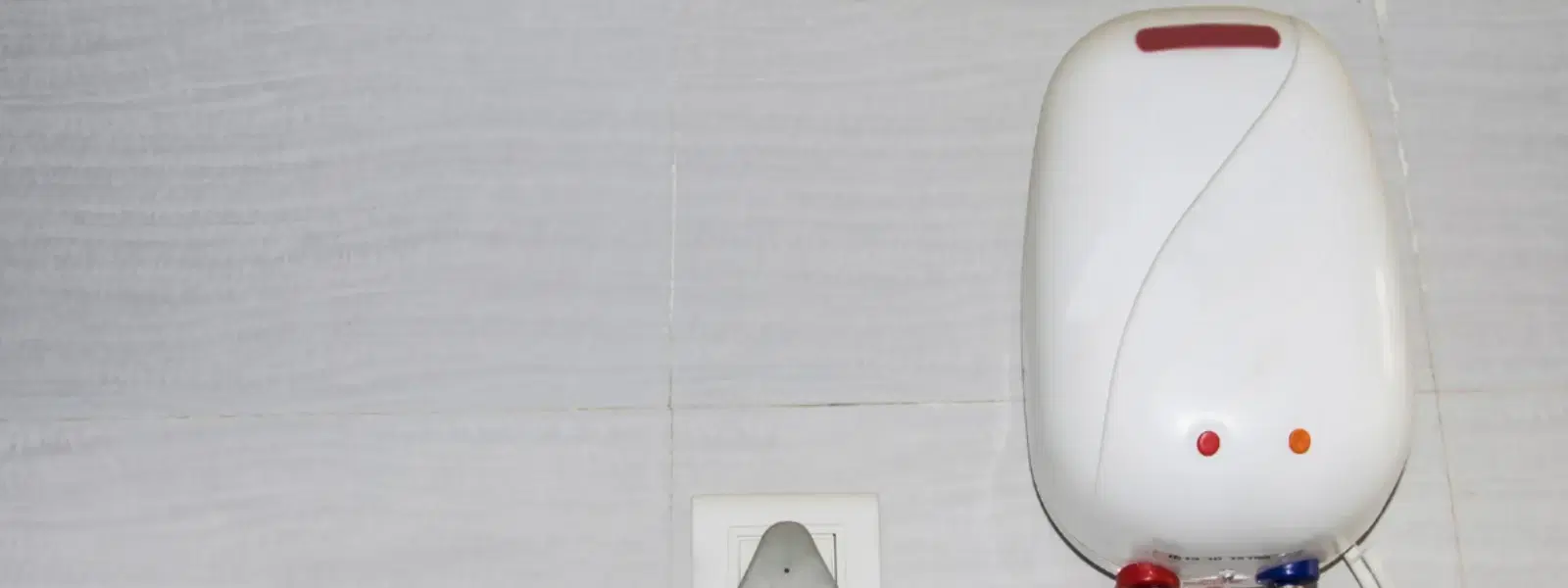
Home Appliances
•03 min read

Buy AO Smith Xpress 25 Litre 5 Star Vertical Storage Geyser with Safety Valve (White) online at best prices from Croma. Check product details, reviews & more. Shop now!
Imagine stepping into a warm shower on a chilly morning, thanks to a well-maintained geyser. Understanding how to use a geyser safely and efficiently is key to enjoying its benefits without any risks. In this guide, you will learn a comprehensive overview of geyser usage, from basic operation and installation instructions to safety and energy-saving tips. Whether you are setting up your geyser for the first time or troubleshooting persistent issues, this FAQ provides clear answers to your questions.
A geyser is an appliance designed to heat water efficiently for household use. It works by converting electrical energy into heat and transferring that warmth to the water. There are different types of geysers, including storage models that keep water heated in a tank, instant models that heat water only when needed, and solar units that rely on sun power to heat water.
Prior to using your geyser, it is important to follow proper geyser installation instructions to ensure safety and optimal performance. Start by carefully reading the manual for how to operate geyser systems. Once installed, check the setup and then learn how to turn on the geyser. Adjust the settings to suit your needs, including how to set geyser temperature. For first-time usage, ensuring the temperature is set within a safe range maximises both efficiency and comfort.
Safety should always come first when using a geyser. To prevent overheating, electrical issues, and water leakage, follow a few simple precautions. Regular servicing and inspection can help you spot potential hazards early. It is advisable to use a trusted technician to check on your installation and to adhere to the recommended steps to use geyser appliances safely.
Electric shocks and improper installation are among the top safety risks associated with geysers. Always ensure the geyser is installed according to manufacturer guidelines. Avoid leaving the appliance on for prolonged periods without supervision and ensure that any signs of water leakage or unusual smells are addressed immediately.
Pro Tip: Prevent Electric Shocks in Bathrooms
Ensure your geyser is connected to a properly grounded electrical system and install a residual current device (RCD) for added safety.

Buy WARMEX Rapido 15 Litres 5 Star Vertical Storage Water Geyser with Over Heat Protection (White) online at best prices from Croma. Check product details, reviews & more. Shop now!
Efficient use of a geyser not only extends its lifespan but also saves energy. One effective strategy is to set the temperature correctly—typically between 50°C and 60°C—which balances comfort with energy efficiency. Incorporating a timer for your geyser further optimises usage, ensuring it isn’t operating unnecessarily. You might also consider insulating water pipes to maintain heat and reduce energy wastage. For those looking to maximise savings, using a 5-star rated unit can help you achieve better efficiency.
For daily operation, it is best to use the geyser in short intervals rather than letting it run continuously. Turning it off when not in use prevents excessive energy consumption. Additionally, lowering the temperature setting during milder weather can lead to significant energy savings over time. Each of these practices supports long-term efficiency while ensuring that you continue to enjoy a warm and comfortable shower.
Routine maintenance is essential for the longevity of your geyser. Regular cleaning and service checks help in identifying minor issues before they become significant problems. To maintain optimal performance, periodically inspect the appliance for water leakage, rust, or strange noises. Consistent follow-up on geyser maintenance tips can save you from unexpected breakdowns and ensure a hassle-free experience.
If you experience issues such as water not heating properly or unusual sounds, there are a few simple troubleshooting steps you can take. First, verify that the thermostat is set correctly and that the power supply is functioning. Check for any visible leaks or blockages in the system. If the problem persists, it may be necessary to contact a professional technician who can offer specialised expertise in geyser troubleshooting tips.

Buy AO Smith 25 Litres 3 Star Horizontal Storage Water Geyser with Glass Coated Incoloy Heating Element (White) online at best prices from Croma. Check product details, reviews & more. Shop now!
Leaving your geyser on for extended periods can waste energy. Turn it off when not in use and consider using a timer for optimal efficiency.
Set the temperature to around 60°C, use the geyser in short intervals, and insulate water pipes to reduce heat loss and save energy.
Ensure proper installation, adhere to recommended safety guidelines, and implement regular maintenance practices to avoid risks like overheating and electrical hazards.
Most geysers allow you to adjust the temperature between 50°C and 60°C. Choose a setting that balances your comfort with energy efficiency.
Check the thermostat, ensure the power supply is functioning, and inspect for leaks or obstructions. Seek professional help if the issue remains unresolved.
This guide has covered essential points about how geysers work, providing clear steps to use geyser systems safely, energy-saving tips, and maintenance and troubleshooting advice. By following these guidelines, you can enjoy a warm and efficient water heating experience while minimising risks and saving on energy. Exploring these simple yet effective strategies ensures that your home appliance continues to serve you well, just as Tata Neu aims to support your journey with ease, convenience, and rewarding NeuCoins benefits during your purchases.